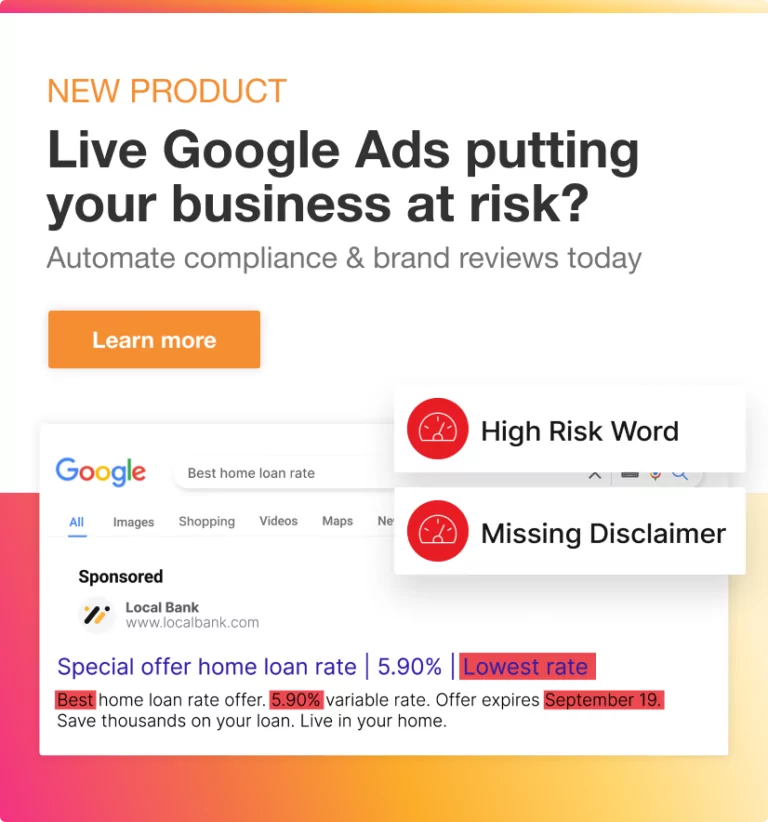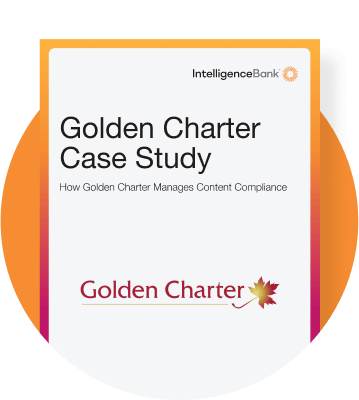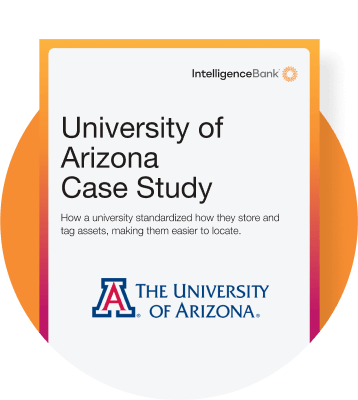For financial institutions in the US, precise implementation of FINRA Rule 2210 is critical to avoiding penalties, maintaining trust, and protecting their reputation. But the cold reality is that understanding, interpreting and upholding these rules across hundreds of campaigns can be overwhelming.
In this guide, we break down what FINRA Rule 2210 is, the penalties for non-compliance, and how AI and automation can assist the review and approval process.
Disclaimer: This document is not intended as a substitute for legal advice. This report has been prepared using both public and private data by IntelligenceBank, a provider of software that helps companies stay on brand and adhere to regulatory compliance. Companies should seek professional legal and regulatory advice when establishing internal compliance protocols.
What is FINRA Rule 2210?
FINRA – the Financial Industry Regulatory Authority – has a specific rule for how the industry communicates with its customers and the public, this is known as Rule 2210. It governs everything from social media posts and email campaigns to brochures and website content. The rule is designed to ensure that all communication is fair, balanced, and not misleading.
Designed to protect investors, FINRA Rule 2210 has an extensive list of mandatory requirements that all revolve around ensuring customers receive accurate and transparent information. It applies to three main types of communications:
- Retail Communications: These are materials intended for individual investors, such as ads, newsletters, and educational content.
- Institutional Communications: These target institutional investors, like pension funds or hedge funds, and include whitepapers, research reports, and presentations.
- Correspondence: This covers one-on-one communications, such as emails or letters sent to individual clients.
The rule requires firms to have their communications approved by a registered principal before they’re distributed, maintain records of all communications, and ensure that any claims made can be substantiated.
What Are the Penalties for Not Complying with FINRA Rule 2210?
Marketing compliance is serious business. Non-compliance with FINRA Rule 2210 can lead to serious consequences. FINRA takes violations of this rule seriously because misleading or inaccurate communications can do significant harm to investors as well as undermine trust in the financial industry.
Here are some of the potential consequences for failing to comply:
- Fines: Financial firms can face hefty fines for violating Rule 2210. For example, in 2024 several firms were fined for not monitoring sponsored content produced by social media influencers. One such firm, M1, agreed to pay $850.000 and implement a supervisory system to ensure future compliance. (Lexology.com)
- Reputational Damage: A publicized violation damages a firm’s reputation, leading to an exodus of clients and other missed business opportunities.
- Increased Scrutiny: Firms that violate the rule may find themselves subject to more frequent audits and inspections by FINRA, which can be time-consuming and costly.
- Legal Action: In severe cases, non-compliance leads to lawsuits from investors who feel they were misled.
These penalties highlight the importance of getting marketing content right the first time. But with so many rules to follow, how can financial firms ensure compliance without drowning in paperwork?
Challenges of Upholding FINRA Rule 2210
For the reasons listed above, regulatory compliance is obviously a top priority. Yet, many still struggle with the complexity and volume of regulations. Here’s why:
Increased Volume of Marketing Content
Financial Services digital media spend has been steadily rising, and is set to grow a further 17.2% in 2025 (EMARKETER). This means firms are producing more content than ever before. From digital ad campaigns and email campaigns to blogs and collateral, the volume of materials that need to be reviewed for compliance has skyrocketed. Add to this the growing use of generative AI tools, which can produce content at scale, and the workload for compliance teams becomes overwhelming.
Shorter Production Deadlines
Marketing teams are often under pressure to produce and publish content quickly. Teams are often challenged with same day turn around times for content they used to have days to complete. Such is the nature of our digital life. These ‘rush jobs’ lead to rushed compliance reviews resulting in increasing risk of errors.
Decreasing Resources
Many firms are operating with lean compliance teams, making it difficult to keep up with the demands of reviewing and approving every piece of marketing material. This resource gap can result in compliance becoming a bottleneck, slowing down campaigns and frustrating marketing teams.
Variances in Interpretation
FINRA Rule 2210 is complex, and its requirements can be open to interpretation. Different legal reviewers may have varying opinions on what constitutes compliance, leading to inconsistencies in how the rule is applied across materials. This causes a lot of confusion and to and fro between departments causing unnecessary delays.
Repetitive and Time-Consuming Reviews
Compliance reviews often involve repetitive tasks, such as checking for balanced presentations, verifying performance data, and ensuring proper disclosures. These tasks can feel tedious for compliance teams, who may feel that marketing teams should already know the rules.
Can FINRA Rule 2210 Marketing Compliance Be Automated?
The short answer? Absolutely.
Automating compliance with FINRA Rule 2210 saves your team time, reduces the risk of human error, and ensures a consistent interpretation of the law. The IntelligenceBank platform uses AI to review marketing content against a comprehensive list of FINRA rules, flagging potential issues before they become problems.
Here’s how it works:
- Create Risk Rules: IntelligenceBank offers a range of pre-existing rule lists tailored to specific legislation by industry and location, including FINRA Rule 2210. These rules can be customized or expanded to fit your organization’s compliance needs.
- Automatically Review Content: Marketing content is automatically reviewed. The platform uses AI-powered technology to see if any of these rules have been breached in your content, (e.g. collateral, digital ads, social media etc.). Reviews can be done at any stage in the production cycle – even when content is already live. The platform provides you with feedback and suggestions for improvement.
Keep a Record: The platform automatically maintains records of all comments made on PDFs, artwork and images etc. so they can easily be referred to down the line.
Benefits of Automating Compliance Reviews
While human oversight and judgment remain essential for nuanced cases, AI reviews can take care of the basic, binary rules mandated by regulators.
In fact, amalgamated IntelligenceBank research for clients shows that over 75% of comments on marketing content made by Legal or Compliance teams relates to errors such as incorrect claims, and missing or incorrect disclaimers. They are the type of comments that AI can deal with on the spot and lift a large part of the burden for Compliance teams. Here is a snapshot of of the results:
- 17% of comments relate to brand compliance issues: These focused on things like brand name usage, logo issues, font sizes, tone, and readability.
- 38% of comments relate to legal and compliance issues: Common concerns included outdated disclaimers, inaccurate claims, missing disclosures, and specific legal language requests.
- 22% of comments are about wording: This includes phrasing issues around claims and product disclosures, rather than basic spelling and grammar.
- 23% of comments required direct human intervention, where nuance or specific context was needed.
Automating compliance reviews can save a significant amount of time. Predicted savings can be estimated via the Content and Web Risk Reviews Cost Savings Calculator.
Additionally, since AI reviews can handle large volumes of content, it becomes far easier for firms to keep up with the growing demand for marketing materials. This scalability ensures that compliance doesn’t become a bottleneck, allowing teams to focus on more strategic tasks.
Speed aside, AI-powered compliance solutions also help reduce human bias in the review process. Different reviewers may interpret compliance rules slightly differently, leading to inconsistencies. AI applies the same standardized checks across all materials, ensuring greater uniformity and reducing the likelihood of subjective errors.
Firms that have adopted AI-driven compliance tools report significant reductions in manual review time and a faster go-to-market process. By automating compliance checks, marketing teams can produce content more efficiently while maintaining strict adherence to FINRA regulations.
Why Existing Rule Lists Work
A marketing compliance platform pre-designed for specific industry or regional regulations knows exactly what to look for. This targeted approach not only improves accuracy but also reduces system setup and deployment time from weeks to days.
Beyond speed and accuracy, industry-specific rule platforms help compliance teams stay ahead of regulatory changes. As financial marketers know, FINRA’s rules and expectations are constantly evolving and scrutiny is on the increase. IntelligenceBank’s rule libraries are continuously updated, ensuring teams have access to the latest compliance requirements and can adapt quickly to new regulations.
Simplified FINRA 2210 Compliance Checklist
To help you give you a flavor for the types of breaches the platform detects, we’ve distilled some of the key requirements into a simplified checklist. While this isn’t an exhaustive list, it covers some of the most important points to keep in mind:
1. Ensure Balanced Presentations
- Always present both the benefits and risks of a product or service.
- Avoid making exaggerated or unsubstantiated claims.
2. Verify Performance Data
- Double-check any performance data or statistics included in your materials.
- Provide context for past performance, such as time periods and market conditions.
3. Include Required Disclosures
- Make sure all necessary disclosures are prominently displayed.
- Avoid burying important information in fine print.
4. Relationship Transparency
- Disclose the nature of your firm’s relationship with individuals used in communication.
5. Recommendations
- Ensure your recommendations are supported by adequate information and disclose any conflicts of interest.
6. References
- Make sure hyperlinks to mandatory BrokerCheck site are readily apparent and appear in the required positions.
Get the complete list with IntelligenceBank industry-specific risk reviews.
Regulators Use AI to Track Compliance
While financial marketers are increasingly turning to AI-powered tools to ensure marketing compliance they’re not alone in leveraging this transformative technology. Regulatory bodies themselves are adopting AI to enhance their oversight capabilities, detect compliance breaches, and enforce rules more effectively. While US marketing compliance regulators are yet to launch hard with AI monitoring, over in the UK, the FCA’s Market Watch program uses AI to scan for wrongdoing to ensure fair trading practices.
This shift highlights the growing importance of AI in the compliance landscape and underscores why businesses should embrace automation to stay ahead of regulatory scrutiny.
Want a Complete Checklist? Let’s Talk
While the checklist above is a great starting point, it only scratches the surface of what’s required to fully comply with FINRA Rule 2210. The IntelligenceBank platform offers a comprehensive, industry specific rule list that can be customized to fit your firm’s specific needs.
By automating content reviews against clear FINRA 2110 guidelines, firms can not only stay compliant with greater certainty and efficiency, but they can stay competitive by getting to market faster. We’d love to show you how we can help.
Contact us.




